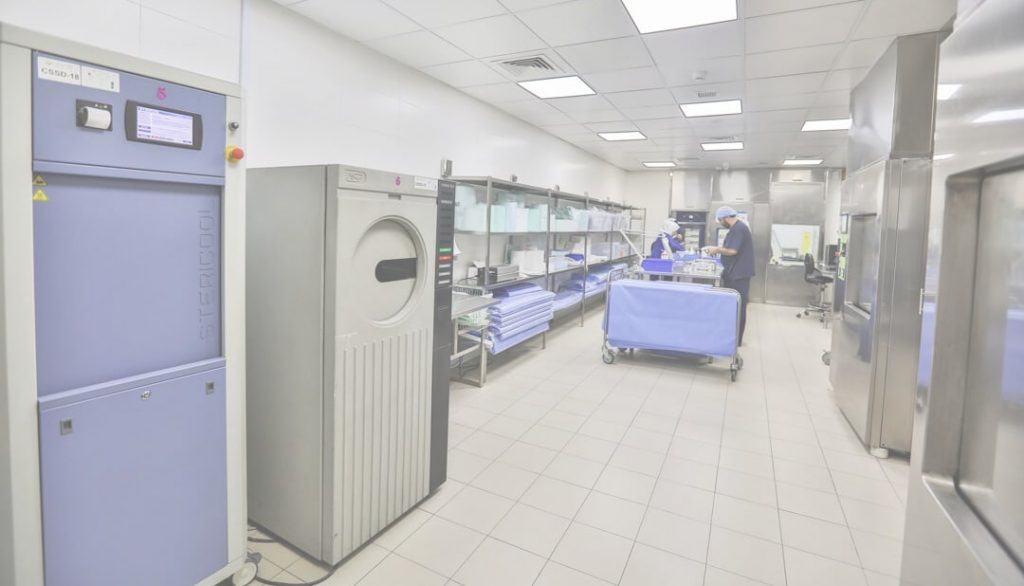
Large autoclaves were essential to the effectiveness of any hospital. The hospital autoclave sterilizer, also known as a steam sterilizer, enables the sterilization of medical tools and materials utilized every day in operations, and procedures, including patient services.
Explain the Working of Sterilization Work
A hospital autoclave sterilizer is used to sterilize laboratory apparatus and waste in medical and laboratory settings. Heat is must in autoclave sterilization to kill microbes, including bacteria or spores.
The heat comes from pressured steam. The steam can hit the high temperatures needed for sterilization due to pressurization.
An autoclave should eliminate all air from inside and across the object, getting sterilized for steam to reach its surface. An autoclave eliminates the air and forces the steam in one of two different ways:
Gravity displacement autoclaves, also known as gravity autoclaves, inject steam into the autoclave chamber and afterward rely on the steam, which would be heavier than air, to force the air out the drain vents at the bottom.
Pre-vacuum and prevac autoclaves use a vacuum pump to expel air from the chamber before steam is applied. This allows steam to enter even dense products quickly.
What happens when microorganisms are autoclaved?
The heat produced by a pressurized steam autoclave destroys bacteria and other microorganisms. It does that by irreversibly changing the form of their structural proteins and enzymes, as well as denaturing proteins, thereby rendering them functionless.
What is the autoclave sterilisation temperature?
The most common autoclave sterilization temperature is 121°C, but several autoclaves allow greater degrees, including 132°C and 134°C.
How long does an autoclave take to sterilize something?
To determine the time it takes to sterilize anything, check the material it has composition with or by using the kind of autoclave there.
To enable the steam heat to enter the media completely, a longer sterilization cycle is a must to sterilize a large volume of media and substances.
Laboratory Autoclaves
In a modern laboratory or research center, infection control and a sterile work environment are major priorities. Autoclaves are therefore essential.
They enable the killing of undesirable and hazardous germs. In most laboratories, autoclaves with just a steam sterilization function were utilized.
These use the extreme heat of steam to create pressure within the device. It also kills bacterial spores by hydrolysis, denaturing then flocculating their cell proteins.
Options and Accessories
The available autoclaves, including their options, are as diverse as the fields of application for autoclaves.
Although autoclaves have the same basic features, they differ in design and size. However, the operation follows the same production rules and key safety criteria.
Autoclaves are to settle in different requirements in large laboratories and production facilities rather than putting them in special research institutions or small labs with a wide range of uses.
As a result, a thorough needs analysis should precede any purchasing decision, considering both present and future autoclave demands.
Aside from space and ergonomic considerations, including ease of operation and economic efficiency, sterilization must be safe, precise, repeatable, and validatable.
How Do I Choose The Best Autoclave?
Important parameters for selecting an autoclave include, among other things: What exactly must be sterilized? And what would the autoclave’s external dimensions be? What should the vessel’s capacity be?
Horizontal and vertical autoclaves, as well as pass-through autoclaves, must be distinguished. What other features and options should the autoclave have?
All of the parameters mentioned above have a significant impact on autoclave operation and workflow within modern laboratories.
Importance of Hospital Autoclave Sterilizer
If you work in a medical setting or not, you must be aware of the importance of sterilizing hospital equipment.
We refer to this as a “standard duty of care”: hospital employees ensure that fail-safe procedures are in place to protect patients’ health.
This means the doctors, nurses, and other medical facility personnel should always endeavor to ensure the safety of individuals present in the hospital’s environment.
The Risks of Sterilizing Hospital Equipment Improperly
Sterilization of various tools in hospitals is critical for patient care, as failing to meet safety criteria can have more serious repercussions, including the following:
- Infection transmission: If unexplained materials are there on hospital equipment or surgical instruments at any moment, they can readily increase the risk of infection by contacting specific body areas to germs.
- Diseases transmission: It’s very simple for infections to move from one patient to another if hospital equipment does not consider sterilization. AIDS, HIV, hepatitis, and many other diseases are instances.
- Dangerous situation: While it may sound dramatic, negotiations in medical equipment result from improper steam sterilization. Patients can die as a result of bacterial illnesses in certain instances.
Conclusion
Lastly, after completing the last two decontamination steps, the most effective and extreme procedure of germ elimination will go.
This is sterilization that permits you to destroy all potentially harmful bacteria with no exception. We’re not the only ones who urge it: the WHO strongly recommends all medical establishments sterilize tools that may have been in contact involving bodily fluids.
Now you have all the necessary information regarding hospital autoclave sterilizer in detail.

